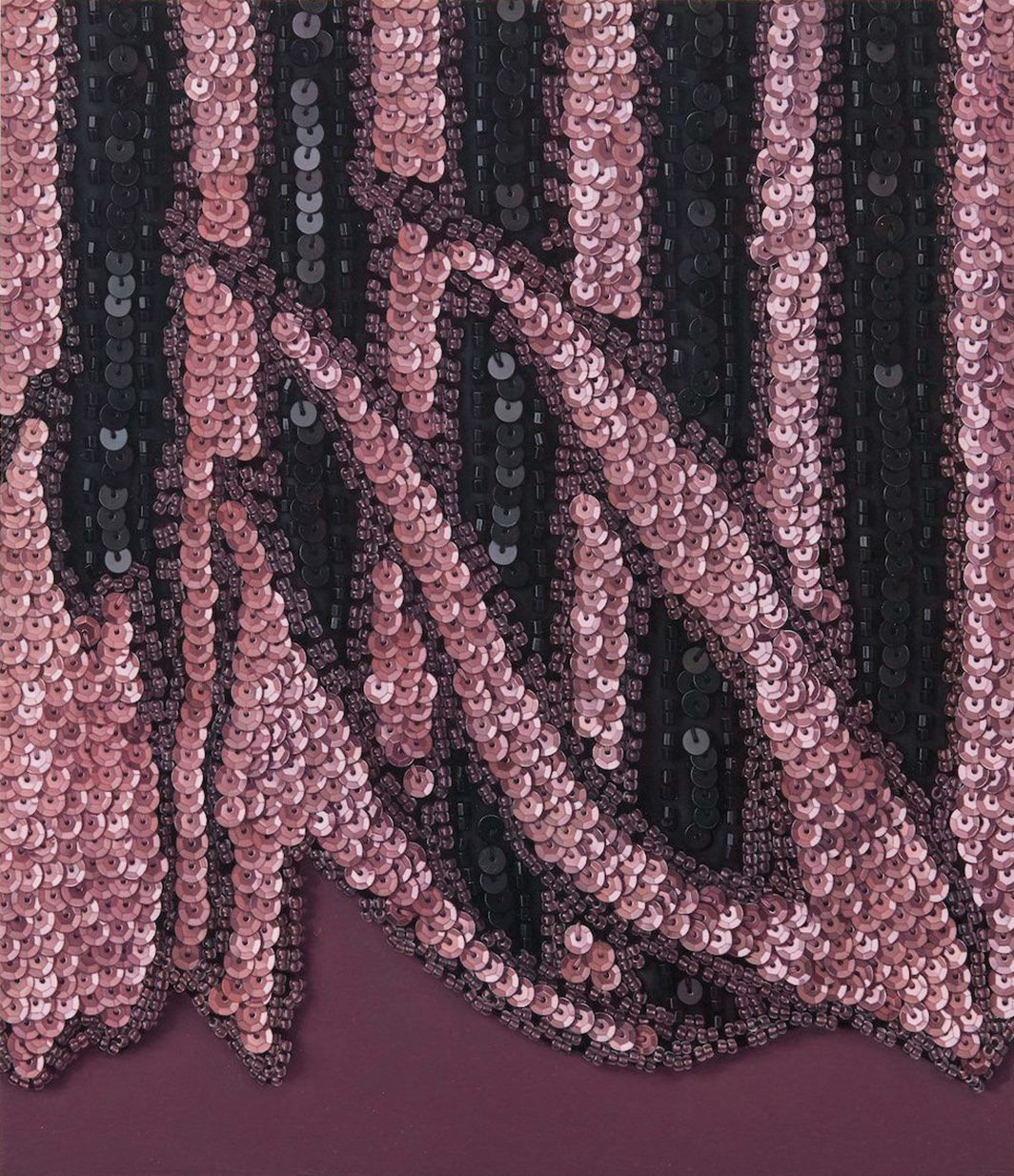This ArtForum review of “Everything Is Surface: Twenty Years of Painting”, a retrospective of works by Victoria Gitman at the François Ghebaly gallery, references how Ashbery’s “Self-Portrait in a Convex Mirror”—a line of which provides the title for the show—also mirrors Gitman’s practice.
Victoria Gitman, Untitled, 2021, oil on board, 9 1⁄4 × 7 3⁄4".
The press release for Victoria Gitman’s master class of a retrospective “Everything Is Surface: Twenty Years of Painting” shares that the show owed its title to a line from John Ashbery’s 1974 poem, “Self-Portrait in a Convex Mirror.” Ashbery’s text is also an homage—the title was borrowed from a sixteenth-century tondo painted by Italian Mannerist Parmigianino, an image the poet first encountered in reproduction. Parmigianino’s work is remarkable for how he depicted himself: His reflection is distorted by the curvature of the titular looking glass, but the panel on which the image was created is also convex, producing a form of illusionism that is both ostensible and real. The bulging support—what writer Susan Stewart memorably called a “half ball of wood”—contours what it represents. But even absent this preemptive framing, it is not hard to imagine how Gitman’s practice over the past two decades has concerned itself with surface as convention and physical armature, the picture plane serving to evoke the limits of both. All the uncanny still lifes spread across ample rooms at François Ghebaly were modestly scaled, maxing out at fourteen and a half inches in height or width. All of the paintings were oil on thick board, unframed, and subtly stood out from the walls, casting faint shadows that asserted a surprising thingness that bounded but also contradicted the sanctity of the untethered image.
Each work was a trompe l’oeil apparition conjured into existence with a multitude of minute strokes. Observation becomes material, the sedimentation of process also a familiar allegory of the studio (think of those gendered tales of creative labor, such as the Greek myth of Penelope). The earliest pieces, from 2001, announced Gitman’s enduring interest in the histories of representation and of women in particular (or, more specifically, their metonyms). A series named “A Beauty,” 2004–2008, centers on women portrayed by male artists. In one instance of tribute that both usurps and recuperated the subject, à la Sherrie Levine, Gitman recapitulated an Ingres drawing from 1815. Every line sits on the creamy surface (nineteenth-century paper transmuted into pigment); Gitman gives flesh to Ingres’s delineations, creating passages of painterly density that embolden the crease of a lid or the modeling of a high cheekbone. Undereyes and lips are especially fine. Related pieces made around the same time zoom out, showing white-bordered postcards of paintings on a solid background. One work re-created an 1823 portrait of Madame Leblanc, also by Ingres, which is currently hanging in New York’s Metropolitan Museum of Art. The sitter stares, utterly self-possessed, encircled by a long gold chain that gathers on itself atop a ruched black dress and a densely patterned textile. Gitman stays close to her sources and faithfully reproduces their details, such as the way a ray of light reflects off someone’s iris, or how it illuminates a piece of metal. Indeed, examples from “A Beauty” were interspersed with other presentational markers of status from the series “On Display,” 2001–11, with which they overlap thematically. These works feature necklaces with ornate gilded adornments and precious gems. Costume and its narrative implications come to occupy Gitman’s paintings of handbags—the more elaborately beaded the better, as this feature allows the artist to labor over their myriad exquisite details—and vintage garments sourced from flea markets and online shops. While some pieces, including one Untitled panel from 2021 that depicts the scallop-like edge of a fabric bedazzled with carnation and black sequins, still played with the relief effect of layering one material on another—as we saw in the Conceptual mise en abyme of Madame Leblanc’s accoutrements and the postcard images—others displayed a more allover composition. Another sequin painting from 2021 was a prime example of this effect, with its camouflage-like tessellation of paillettes in silver, teal, and hot pink. Other edge-to-edge images made use of fur, tangibly plush and full of textural piles where density self-differentiated into single strands. Spotted and striped in an array of colors, they forged a visual lexicon of style that cued tropes of modernist abstraction, from the monochrome to the grid, as well as the ready-made obsolescence of fashion, at times indistinguishable from that of art.


